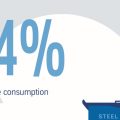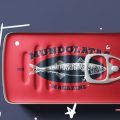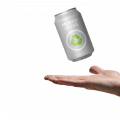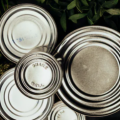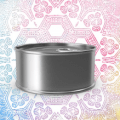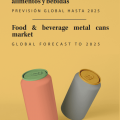More and more people are choosing to incorporate a pet into their homes. The number of pets in the Old Continent has increased in the last decade by almost 20 million, reaching the not inconsiderable figure of 90 million companion animals.
This significant growth also translates into an important boost in the production of pet food. In 2020 alone, nearly 9.4 million tons of feed were generated, which has led to increased demand and turnover in this industry, which last year reached the highest level in the past decade.
Thus, the tinplate market is one of the clear beneficiaries of this increase in demand for canned pet food. According to FEDIAF, the European Petfood Manufacturers Federation, in the last ten years, revenues have increased by 60 percent and reached 21 billion euros.
Owners are increasingly concerned about feeding their animals. The next few years will be key, but many manufacturers are already ahead of the curve. The tinplate can is one of the most widespread containers for wet food, as it offers many advantages due to its packaging and preservation. “Food packaged in cans retains its natural flavor and nutritional value, is highly recyclable and stays in the steel cycle. Especially at a time when the demand for sustainable products is growing and the end consumer is increasingly concerned about the impact of waste on the environment. This is a determining factor for purchasing,” says Carmen Tschage, head of communications and market development at Thyssenkrupp Rasselstein GmbH, a German tinplate manufacturer.
Packaging manufacturers who want to serve the progressive demand will benefit in the long run from the DWI two-piece tinplate can. “At Rasselstein, we have acquired vast knowledge about the development and manufacture of steel grades for DWI cans over the past decades. Our steel grades offer the necessary purity and have outstanding forming characteristics as well as optimized tribological surfaces. This is important for container manufacturers, as the material properties allow further processing with minimal waste and minimal tool wear. This makes the two-piece can cost-effective, particularly for high production volumes,” adds Heiner Schäfgen, Head of Technical Customer Service at ThyssenKrupp Rasselstein GmbH.
In addition, the DWI can offers all the advantages that also characterize other tinplate food cans, the DWI can is also puncture resistant. “Customers don’t have to keep the food safe from their pets, they can stack it anywhere thanks to its robust nature, saving space. As pets are social beings, consumers will tend to opt for larger containers, with more content, so the can is the best option,” he adds.
In terms of sustainability in the packaging sector, the most important aspect is its recyclability. In this regard, tinplate cans, one of the best-selling packaging for pet food, stand out significantly from competing products. Due to its inherent characteristics, tinplate is easily separated from waste to be reworked into a new product in the steel mill. It is nearly one hundred percent recyclable, almost infinitely and without under-recycling, i.e. without reducing its quality. The material cycle is successfully closed.


